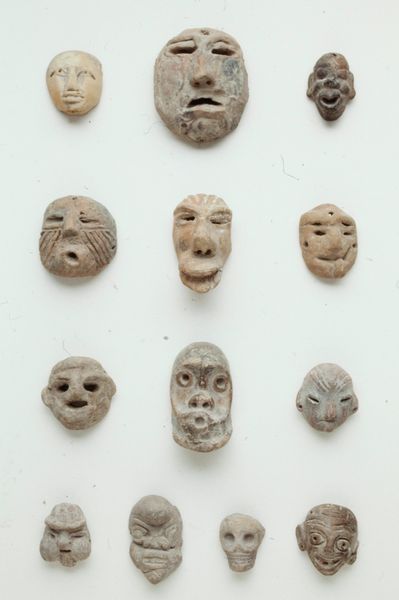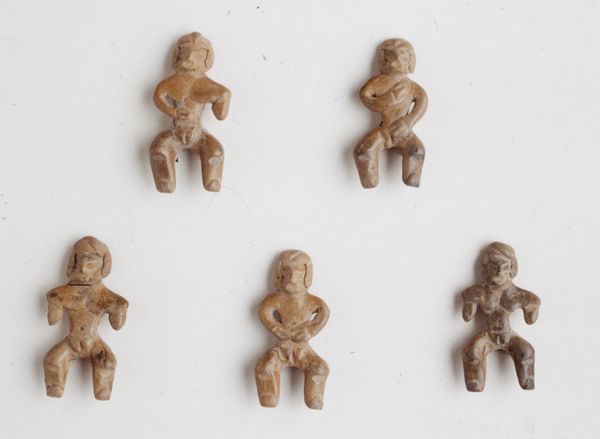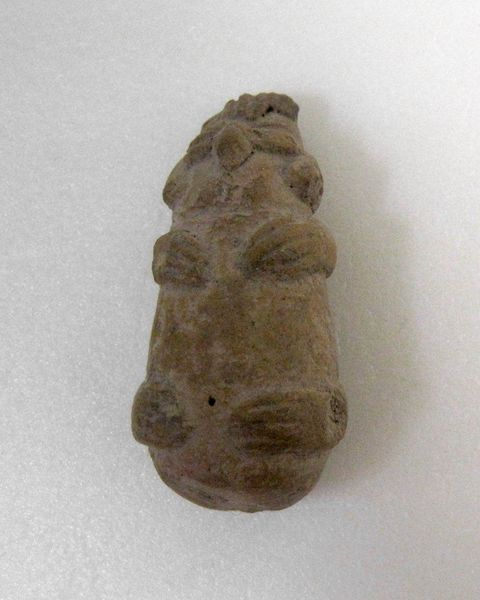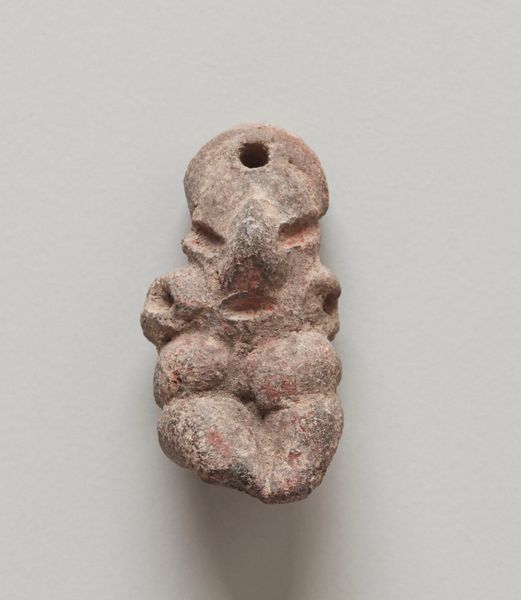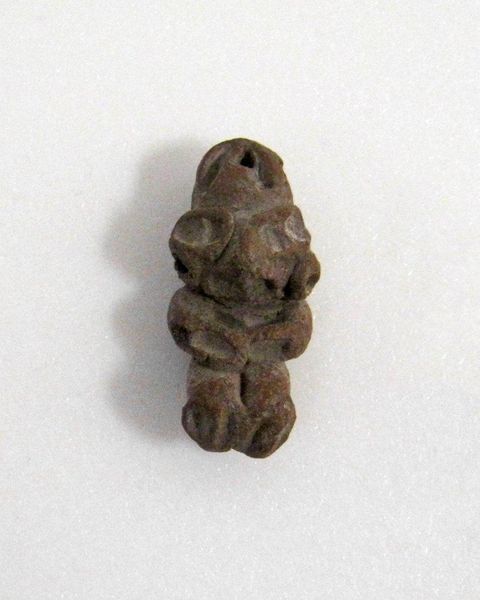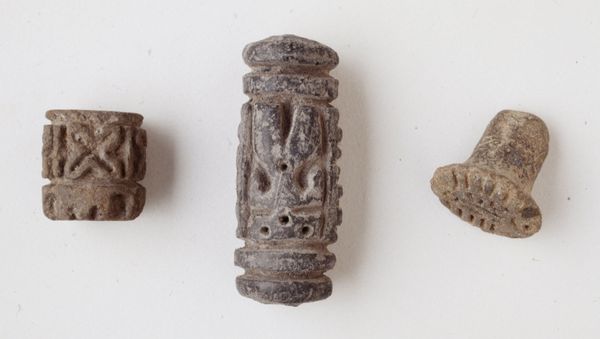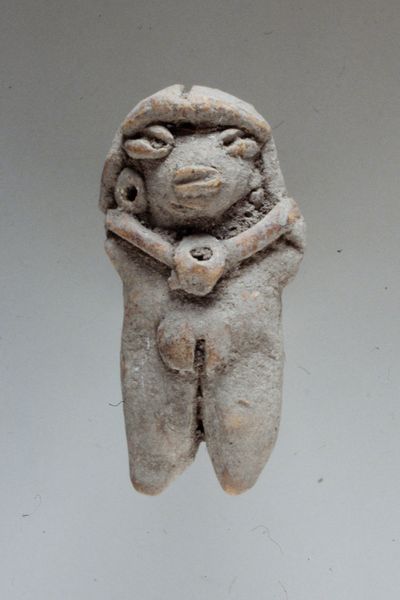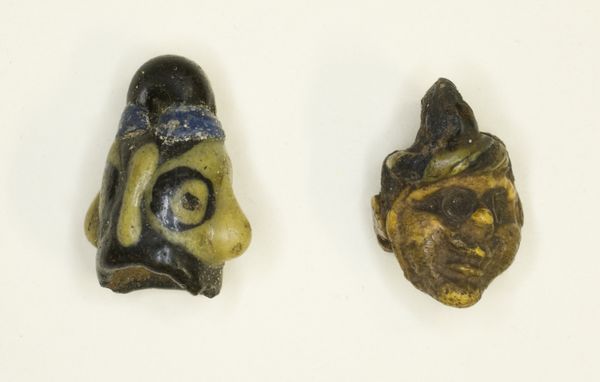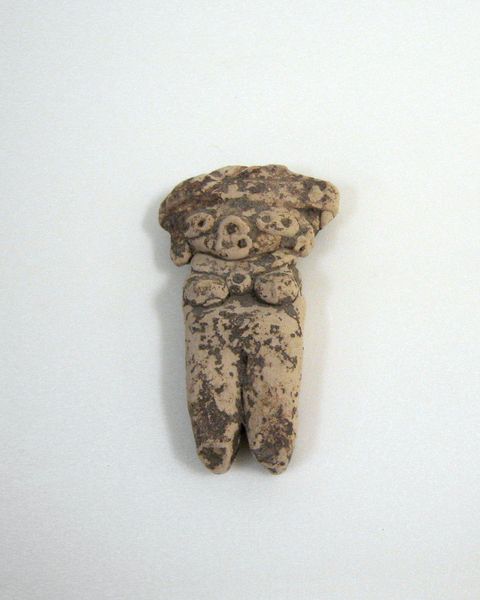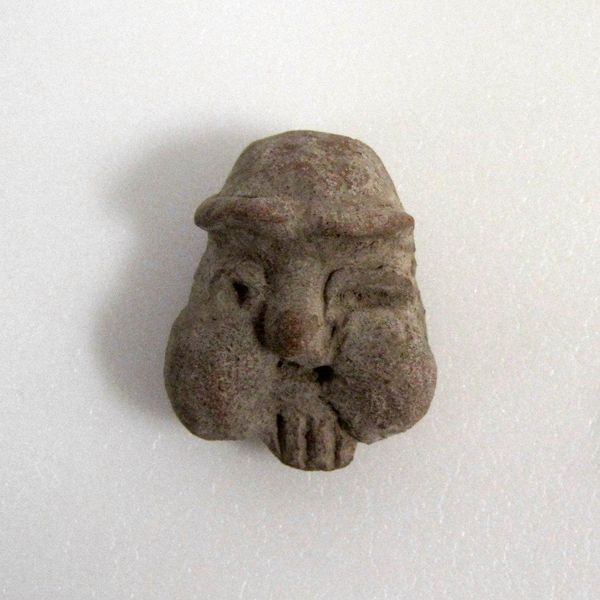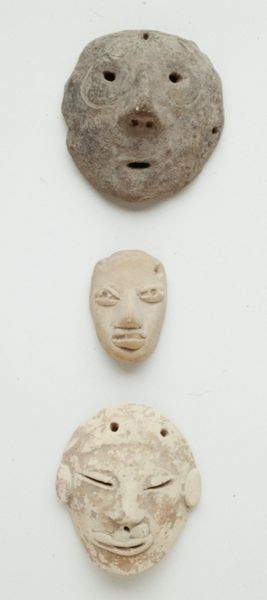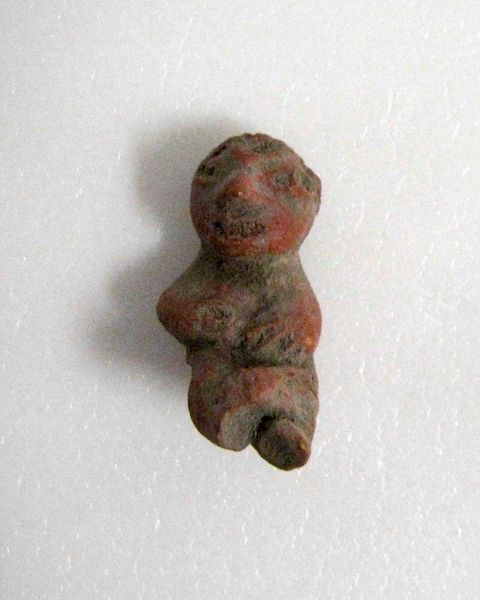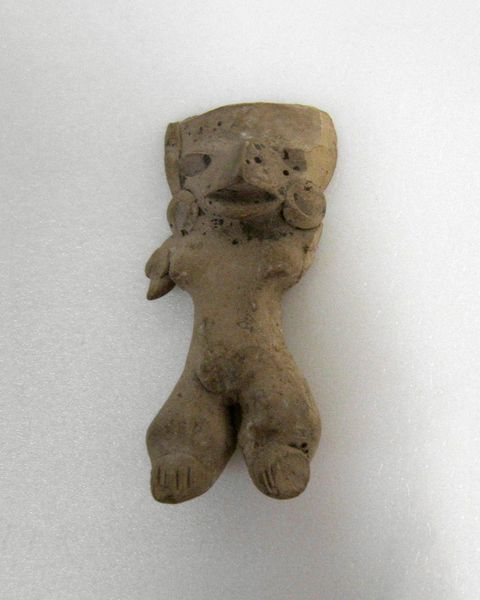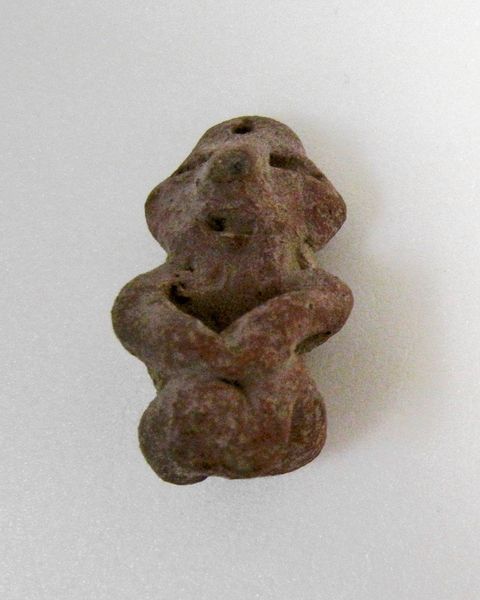
ceramic, earthenware, sculpture, terracotta
#
worn
#
textured
#
ceramic
#
figuration
#
earthenware
#
sculpture
#
terracotta
Copyright: Public Domain
Curator: Well, these diminutive earthenware figures are believed to have been crafted by the Tlatilco people around 1500. The Minneapolis Institute of Art is fortunate to hold these Miniature figurines in its collection. Editor: Intriguing. My first impression is one of great variety, despite their size. Each little sculpture seems to embody a unique personality. Curator: Indeed. The Tlatilco culture, which flourished in the Valley of Mexico during the Early and Middle Preclassic periods, is particularly known for its ceramics. These figures would have been made by women using local resources and methods and were most likely for adornment, such as beads. Editor: So, their value isn’t so much intrinsic; it derives from their connection to the everyday lives of these women? Their bodies and attire, which is carefully carved onto some of the figures, become a code through which Tlatilco life can be examined. And looking closely at these objects you start to get the sense of something profoundly human—a very personal form of production. Curator: Precisely! The forms of labor involved in making ceramic pieces is very evident. What can appear quite uniform is in fact full of diversity, thanks to these little adjustments in how the pieces are fashioned. It suggests these were a vital and valued product of social creation, perhaps linked to ideas of creation or the domestic realm, which scholars have speculated on. Editor: There’s something profoundly compelling in how so many very simple forms create great variety within an established system. The texture and color create depth, the proportions are elegant and sensual. Together, the components function together to give each figure a strange charisma that elevates each piece. Curator: The labor involved would also have shaped the aesthetic, creating that distinctive feel as material realities affect what could be created with limited means, of course. These women must have become such practiced experts. Editor: It prompts reflection on the artistic possibilities born of specific means, doesn't it? How materials can allow a whole world of aesthetic variations to blossom. Curator: It does. Next, shall we look at the social history related to pottery in Tlatilco culture? Editor: Certainly. It sounds fascinating.
Comments
No comments
Be the first to comment and join the conversation on the ultimate creative platform.
